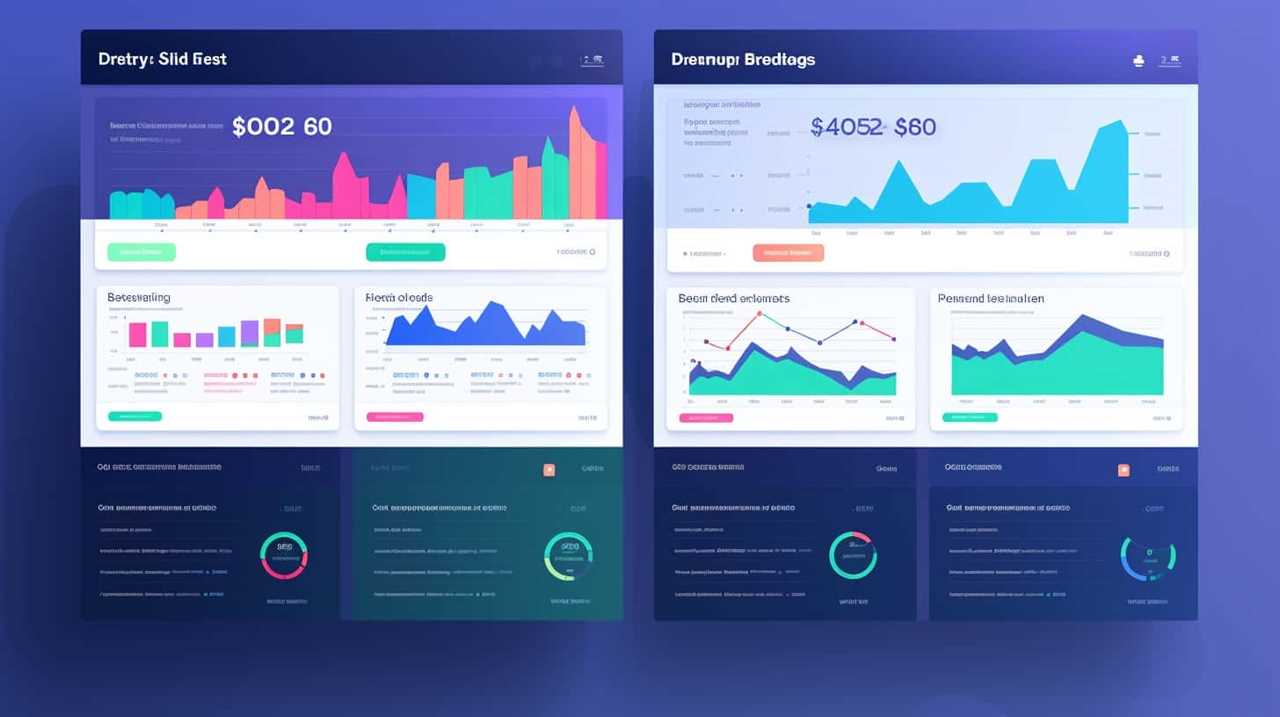As an individual who cultivates organic produce, I’m familiar with the obstacles involved in connecting with consumers in today’s digital environment. Therefore, finding out that Google Ads offers assistance to small-scale farmers such as myself in achieving digital expansion was exciting.
Did you know that businesses make an average of $2 for every $1 spent on Google Ads? In this article, I’ll share my data-driven strategies for setting up successful campaigns, targeting the right audience, and optimizing ad copy to maximize impact.
Get ready to master Google Ads and watch your farm thrive online.
Key Takeaways
- Google Ads can be a highly effective tool for small-scale organic farmers to reach a wider audience and increase sales.
- Targeting specific keywords and using relevant ad copy can significantly enhance the effectiveness of advertising campaigns.
- Measuring key metrics and optimizing campaigns based on data-driven decisions can maximize the advertising budget and overall success.
- Leveraging remarketing techniques can cultivate customer loyalty, increase conversions, and build a strong brand presence.
Understanding Google Ads for Organic Farmers
I have recently delved into the world of Google Ads and discovered how it can significantly benefit small-scale organic farmers. As an advocate for sustainable agriculture, I was intrigued by the potential that digital advertising holds for these farmers to reach a wider audience and increase their sales. With the right Google Ads strategies, organic farmers can tap into the power of online advertising and elevate their businesses to new heights.

One of the key strategies for organic farmers is to target specific keywords that resonate with their target audience. By selecting relevant keywords such as ‘organic produce,’ ‘locally sourced,’ and ‘sustainable farming,’ farmers can ensure that their ads are seen by people who are actively searching for these types of products. This targeted approach not only increases the chances of reaching potential customers, but also enhances the overall effectiveness of the ad campaign.
Measuring the success of Google Ads campaigns is essential for organic farmers to optimize their advertising efforts. By analyzing key metrics such as click-through rates, conversion rates, and return on investment, farmers can gain valuable insights into the performance of their ads. This data-driven approach enables them to make informed decisions and refine their strategies to maximize their advertising budget.
Setting Up a Successful Google Ads Campaign
To transition from understanding Google Ads for organic farmers to setting up a successful Google Ads campaign, let’s delve into the process of creating targeted ads that resonate with the target audience. When it comes to maximizing budget and measuring ROI, it’s crucial to approach Google Ads strategically.
First, it’s important to define your campaign goals and objectives. Are you looking to increase website traffic, boost sales, or create brand awareness? Knowing your goals will help you craft ads that align with your desired outcomes.

Next, conduct thorough keyword research to identify the most relevant and high-performing keywords for your ads. This will ensure that your ads appear in relevant searches and reach your target audience effectively.
Craft compelling ad copy that highlights the unique selling points of your organic farm. Use creative language to engage your audience and make your ads stand out from the competition.
Consider using ad extensions to provide additional information and increase visibility. These extensions can include site links, callouts, and structured snippets, which can enhance your ad’s performance and drive more clicks.
Finally, regularly monitor and analyze your campaign performance to measure ROI. Use Google Ads’ reporting tools to track key metrics such as click-through rates, conversions, and cost per conversion. This data will enable you to make data-driven decisions and optimize your campaign for better results.

Targeting the Right Audience With Google Ads
Transitioning from setting up a successful Google Ads campaign, let’s now explore how to effectively target the right audience with Google Ads.
Understanding ad metrics is crucial in improving ad targeting. By analyzing these metrics, such as click-through rates, conversion rates, and cost per click, you can gain valuable insights into the performance of your ads and make data-driven decisions to optimize your targeting strategy.
One key metric to focus on is click-through rate (CTR), which measures the percentage of users who click on your ad after seeing it. A low CTR might indicate that your ad isn’t resonating with your target audience, while a high CTR suggests that your ad is highly relevant and engaging. By continuously monitoring and optimizing your ad copy and design, you can improve CTR and attract more qualified leads.
Conversion rate is another important metric to consider. It measures the percentage of users who take a desired action after clicking on your ad, such as making a purchase or filling out a contact form. By tracking conversion rates and analyzing the behavior of your website visitors, you can refine your targeting and focus on reaching users who are more likely to convert.

In addition to ad metrics, Google Ads offers various tools and targeting options to help you reach the right audience. You can narrow down your audience based on location, demographics, interests, and even specific keywords. By leveraging these targeting options and continuously monitoring your ad performance, you can ensure that your ads are reaching the right people at the right time.
Optimizing Ad Copy and Keywords for Maximum Impact
When optimizing ad copy and keywords for maximum impact, I focus on leveraging personal pronouns to connect with my target audience. By using words like ‘you’ and ‘your,’ I’m able to create a sense of direct communication and make my ads feel more personalized. Additionally, I employ the following strategies to ensure my ad copy and keywords are optimized:
- Conducting thorough keyword research techniques to identify the most relevant and high-performing keywords for my ads.
- Creating compelling and concise ad copy that highlights the unique benefits and value proposition of my products or services.
- Utilizing ad copy testing to experiment with different messaging styles, calls to action, and offers to determine what resonates best with my audience.
- Incorporating targeted keywords in the headlines, descriptions, and URL paths of my ads to improve their visibility and relevance.
- Monitoring and analyzing the performance of my ads regularly to identify areas for improvement and make data-driven optimizations.
By implementing these strategies, I’m able to maximize the impact of my ads and drive better results for my small-scale organic farm.
In the next section, I’ll discuss the importance of tracking and analyzing performance with Google Ads.

Tracking and Analyzing Performance With Google Ads
In tracking and analyzing the performance of my Google Ads campaigns, I rely on data-driven insights to make informed decisions and drive continuous growth for my small-scale organic farm. By carefully analyzing ad metrics, I can identify areas of improvement and optimize my campaign performance.
One of the key metrics I analyze is click-through rate (CTR), which measures the percentage of users who click on my ads after seeing them. A high CTR indicates that my ads are resonating with my target audience and driving engagement. By regularly monitoring and comparing CTRs across different ads and keywords, I can determine which ones are performing well and adjust my strategy accordingly.
Another important metric is conversion rate, which measures the percentage of users who take a desired action on my website, such as making a purchase or signing up for a newsletter. By tracking the conversion rate for each ad and keyword, I can identify which ones are driving the most valuable actions and allocate my budget towards those that yield the highest return on investment.
Furthermore, I analyze the cost per acquisition (CPA), which measures the average cost of acquiring a new customer. By tracking the CPA for each ad and keyword, I can identify opportunities to optimize my campaign and reduce costs while maximizing results.

Leveraging Remarketing to Boost Conversions and Customer Loyalty
As a small-scale organic farmer, I understand the importance of targeting returning website visitors and increasing customer retention.
By leveraging remarketing strategies through Google Ads, I can effectively reach out to previous website visitors who’ve shown interest in my products.
This not only boosts conversions by reminding them of what they loved about my farm, but also cultivates customer loyalty by staying top-of-mind and offering personalized experiences.
Targeting Returning Website Visitors
One effective strategy for boosting conversions and fostering customer loyalty is by leveraging remarketing to target returning website visitors. This technique allows you to specifically tailor your marketing efforts towards those who’ve already shown interest in your brand. By reminding them of your products or services, you can increase the likelihood of them making a purchase or engaging with your business again.

Here are five reasons why targeting returning website visitors through remarketing is crucial for your digital growth:
- Reinforce brand awareness and recognition.
- Increase conversion rates by presenting personalized offers.
- Build customer loyalty and trust through consistent messaging.
- Maximize your advertising budget by focusing on a warm audience.
- Gather valuable data to optimize future campaigns.
Increasing Customer Retention
By leveraging remarketing to target returning website visitors, I can significantly increase customer retention and boost conversions and customer loyalty.
Remarketing allows me to reach out to those who’ve already shown interest in my organic farm products and remind them of the value I offer. With tailored ads and personalized messages, I can nurture these potential customers and build a stronger connection with them.
By staying top of mind and providing relevant content, I can encourage repeat purchases and turn satisfied customers into brand advocates. This not only increases customer loyalty but also expands my organic farm’s reach through positive word-of-mouth.

Remarketing is a powerful tool that allows me to create a loyal customer base while building brand advocates who can help me attract new customers.
Frequently Asked Questions
How Much Does It Cost to Advertise on Google Ads as a Small-Scale Organic Farmer?
As a small-scale organic farmer, I have found that advertising on Google Ads is cost-effective and offers a range of targeting options. It allows me to reach my desired audience efficiently and grow my digital presence.
Are There Any Specific Regulations or Requirements for Advertising Organic Products on Google Ads?
When advertising organic products on Google Ads, it’s essential to comply with specific regulations and requirements. These include having organic product certification and adhering to advertising restrictions to ensure transparency and trust with consumers.
What Are Some Effective Strategies for Targeting Local Customers Through Google Ads?
To target local customers through Google Ads, I employ effective strategies like geo-targeting and local keyword optimization. By optimizing my ad content with relevant local information, I can attract and engage my ideal audience.

Can Google Ads Help Organic Farmers Increase Their Online Sales and Visibility?
Yes, Google Ads can definitely help increase online sales and visibility for organic farmers. By implementing effective digital marketing strategies, we can tap into the latest organic farming trends and reach a wider audience.
How Can Organic Farmers Effectively Track and Measure the Success of Their Google Ads Campaigns?
To effectively measure the success of Google Ads campaigns, organic farmers can track key metrics like click-through rates, conversion rates, and return on ad spend. By optimizing campaigns based on data-driven insights, they can cultivate digital growth and maximize online sales.
Conclusion
As I dive into the world of Google Ads for small-scale organic farmers, I’m amazed by the untapped potential lying within this digital landscape. Just like a seedling waiting to burst through the soil, these ads have the power to cultivate growth and reach a wider audience.
By targeting the right audience, optimizing ad copy and keywords, and leveraging remarketing, we can sow the seeds of success and watch our conversions and customer loyalty blossom.

It’s time to embrace the power of Google Ads and reap the bountiful harvest it offers.










